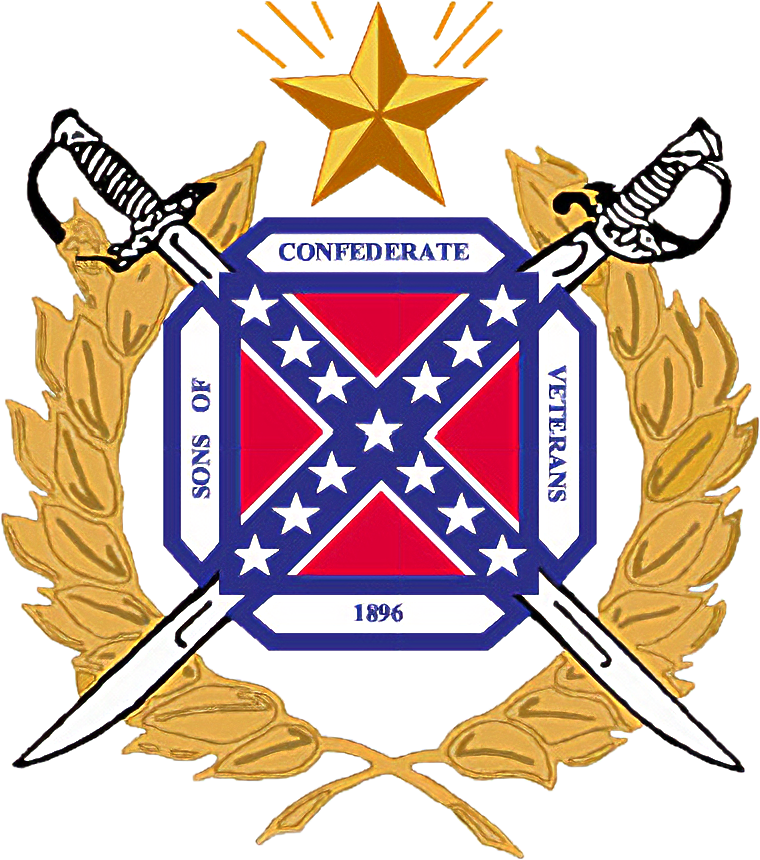
Welcome to the Colonel Thomas S. Lubbock Camp
We are an historical, patriotic, and non-political organization with membership open to all male descendants of any veteran who served honorably in the Confederate States’ armed forces. We assist members and the general public in genealogical research of their ancestors, preservation work such as the raising of funds for repair on statues and other monuments, mark graves, encourage living history presentations and battle re-enactments and meet monthly to discuss military, societal, and cultural topics germane to the period encompassing the War for Southern Independence, 1861-1865. We are international and organized into divisions, brigades and camps.
Colonel Thomas S. Lubbock Camp #1352 is named in honor of Confederate Colonel Thomas S. Lubbock. When the War Between the States started Thomas with his friend Benjamin Terry were authorized to raise a regiment of cavalry to serve in the Confederate States Army. The two men recruited the Eighth Texas Cavalry, more commonly known as “Terry’s Texas Rangers”. Terry served as the Commander and Lubbock as lieutenant colonel.
Our meetings are open to everyone who has a sincere interest in the South’s heritage, history, culture and people.
Current Officers & Contact Information
Commander: Michael C. W
1st Lt. Commander & adjutant: James G. P
Camp 1352 Meeting Information
The Camp meets on the Third (3rd) Thursday of the month
Disabled American Veterans Building
7414 83rd St Lubbock, TX
Colonel Thomas S. Lubbock
Unsung Texas Hero
Thomas Saltus Lubbock was born on November 29, 1817 to Henry T. and Susan Ann (Saltus) Lubbock in Charleston, South Carolina.
He is the younger brother of Francis Lubbock, the ninth Governor of Texas.
In 1835, he moved to Louisiana and worked as a cotton factor in New Orleans. When the Texas Revolution started, he marched to Nacogdoches, Texas, with Capt. William G. Cooke’s company and participated in the siege of San Antonio de Bexar. Thereafter he took employment on a steamboat on the upper Brazos River.
After working for a time with Samuel May Williams and Thomas F. McKinney, Lubbock joined the Texan Santa Fe Expedition as a lieutenant of one of the military companies. He and his men were captured in New Mexico and confined in Santiago Convent, Mexico City. Lubbock escaped by jumping from the convent’s balcony and made his way back to Texas. After Adrián Woll seized San Antonio in 1842, Lubbock was elected first lieutenant of Gardiner N. O. Smith’s company and, due to Smith’s illness, marched at the head of the company to Bexar to join in driving the Mexicans back across the Rio Grande. Lubbock and his men were among the Texans who followed Alexander Somervell back to Texas on December 19, 1842, after declining to join William S. Fisher on the Mier Expedition.
Lubbock was married on December 14, 1843, to Sara Anna Smith.
Lubbock was a strong secessionist, characterized as a “very worthy and zealous” Knight of the Golden Circle. At the beginning of the War Between the States he accompanied Benjamin Franklin Terry, John A. Wharton, Thomas J. Goree, and James Longstreet (who was to become the commander of I Corps of Robert E. Lee’s Army of Northern Virginia) from Galveston, Texas to Richmond, Virginia. At the Confederate capital on June 22 or June 23, 1861, he and Terry, seconded by Senator Louis T. Wigfall, Thomas Neville Waul, Wharton, and Longstreet, petitioned Confederate President Jefferson Davis for “authority to raise a company or battalion of guerrillas.” “I must have your men,” Davis reportedly replied.
While in Virginia, Lubbock, Terry, and some fifteen other Texans organized themselves into an independent band of rangers to scout for the Confederate Army. Early in July, Lubbock and Terry, at the head of a company of Virginia cavalry, charged a Union camp, captured two of the enemy, wounded a third, and captured a horse and a Sharps rifle. Only then did they realize that they were alone and that the Virginians had not followed them in their rash attack.
Lubbock was still a civilian in Virginia at the time of the battle of First Bull Run; he “exposed his life in bearing messages during the contest.” With Terry, who had also served as a volunteer aide on the battlefield, Lubbock was authorized to raise a regiment of cavalry to serve in the Confederate States Army. The two men returned to Texas and recruited the Eighth Texas Cavalry, more commonly known as “Terry’s Texas Rangers”. Terry served as the regimental colonel and Lubbock as lieutenant colonel. In poor health, Lubbock left the regiment at Nashville, Tennessee and never returned to it.
Colonel Terry was killed at the Battle of Rowlett’s Station (also known as the Battle of Woodsonville), in Kentucky on December 17, 1861. On January 8, 1862, Lubbock, then sick in bed in a Bowling Green hospital with typhoid fever, was promoted to colonel and advanced to command of the regiment. He died the next day. Thomas Saltus Lubbock is buried in Glenwood Cemetery.
The city of Lubbock, Texas and Lubbock County, Texas are named in his honor.
